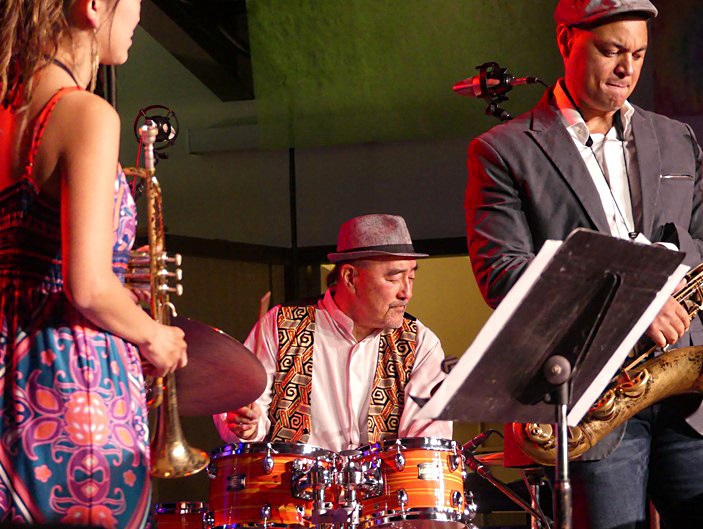
Tech Tools
Tuners and similar analyzers provide visual confirmation when it’s too loud to hear or when hearing is compromised.
One recently introduced device that’s especially impressive and useful for guitar techs and players is the Roadie 2 tuner. This handheld unit combines a vibration-sensing tuner, memory slots for a variety of instruments and tunings with a bright display, and a motorized head that quickly performs the tuning.
Just select the instrument/tuning from the menu, put the head on the tuning peg, pluck the string a few times while it brings it to pitch and flashes green, then move to the next string until you’re done.

I’ve found it faster and more accurate than using a clip-on tuner, and it can easily be used in loud ambient environments. A companion app allows adding different instruments or creation of different tunings that can then be uploaded to the device.
System Tools
In recent years, pro audio equipment has become much smarter, aiding system setup and tuning and providing visual feedback to the engineer.
Software/hardware tools like Rational Acoustics Smaart and Meyer Sound SIM, in conjunction with precise and matched measurement mics, use FFT (fast Fourier transform) analysis to analyze the acoustic output of loudspeaker systems and provide information on tuning them for a flat (or shaped, as desired) frequency response. Other manufacturers provide a variety of tools to measure and adjust the response and coverage of their systems.

Digital mixing consoles provide visual representations of equalization adjustments, accessing multiple bands across the audio spectrum, and with the ability to adjust the bandwidth of the filter as required. Some also have automatic feedback suppression algorithms. In addition, these adjustments can be saved as presets, giving a repeatable starting place for the next show.
At Monterey, I watched guest engineers load their channel and EQ settings via USB into the DiGiCo console at FOH, taking them much of the way toward “show ready” in a relatively short time. Virtual sound checks are another way to add consistency prior to a live performance.
All of these tools help streamline setup and show preparation, and in addition rely less on hearing and judging every nuance of all the audio sources, versus the process of starting from scratch each time.
“I use measurement software more to give me visual feedback on what I’m hearing,” says Malgieri, “but that might change as I get older and need to rely on it to tell me things I wouldn’t otherwise be aware of.”
Keep On Keepin’ On…
You’ve developed your audio and musical skills over a lifetime of experiences and hard work, and your hearing is only one aspect of what you contribute. Though it’s critical to preserve the hearing you currently have, nearly everyone will have at least some high-frequency loss, and at least some will have to deal with more substantial hearing losses in the context of mixing shows and events.
My advice to everyone working in this profession is to take hearing tests on a regular basis in order to be aware of any problem areas and learn to compensate for them. It’s better to know that you’re less sensitive from 3 to 6 kHz, adapt your mix accordingly, and deliver better audio to the audience – rather than gaining a reputation for harsh mixes.
Explore the variety of tools that can help in making good audio decisions, including hearing devices if they’re called for – so you can keep making a living doing what you do best.
A look into the hearing test process follows on page 5.
